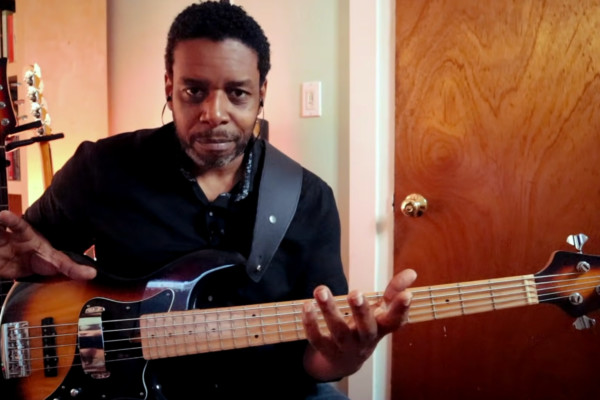Practice Slow/Practice Fast
“Slow practice is fast practice” they say. To be sure, slow practice is a powerful strategy. Used by itself, however, it is incomplete. Ultimately, to perform fast passages well, we will need to have practiced them at full speed.
In fact, if we are not careful, solely practicing a passage under tempo can drive us into a rut. It can make it so that we can only hear and feel the passage as being slow. Rather than finding the passage easier over time, we may find it more difficult to play the passage at speed when we need to. As a result, when working on a quick passage, I’ve found it best to vary the practice strategy, and the speed.
We’ve talked about a variety of techniques in the past, and we can call this one the Fast-Slow-Medium-Fast technique. Clever eh?
It goes something like this:
First: We start the day’s practice of the passage in question by reading through it at tempo, even if it contains mistakes, or we feel as if we are “faking” the passage.
Do this once only. This serves as a “test” to see how well we know, or don’t know, the passage.
- If we are immediately successful, then perhaps a few review repetitions will suffice for the day. Repeat the passage, correctly at tempo 3 or 4 times and call it a quits for this passage.
- However, if we are unsuccessful, we should continue on below.
Next: Drastically reduce the tempo.
We find a tempo at which we can play the passage easily and accurately. This is our tempo for this part of the practice session.
- This tempo might seem, “ridiculously” slow
- To be clear, however, we are searching for a tempo at which we can play the passage easily without major error
- We should play the passage, correctly, 10 or 11 times. At the tempo we have chosen here, we should be able to mostly perform the correct repetitions consecutively. If we cannot, the tempo is likely too fast.
Next: Increase the tempo, moderately.
- We choose a tempo at which we can perform the passage without a major disaster, but which is still a challenge. What we are seeking is a tempo at which we can perform the passage accurately, but not easily. Correct performance of the passage should require concentration.
- Play the passage, correctly, 10 or 11 times. At the tempo we have chosen here, we may find correct performances of the passage interrupted by incorrect performance of the passage. This is fine. In fact, so long as we get more right than we do wrong, it simply confirms that we are at the correct tempo. For example, 3 correct followed by 1 wrong is OK. However, 1 correct and 3 wrong means the tempo is too fast.
Finally: Increase the tempo again.
- We choose a tempo at which we may potentially perform the passage, perhaps with a few errors, but at which we may also fail. Note: Depending on the challenge of the passage, and the result of any previous work, we may be at the performance tempo, or we may still be under tempo.
- Attempt this tempo about 4-6 times. We may get a few correct, or we may not be completely satisfied with any attempt. So long as we are close to performing it correctly, we are at the right tempo. The point is to attempt a tempo slightly beyond our abilities.
Another way of describing our Four Tempi, used in this practice strategy, might be:
- Performance Speed
- Extremely Slow
- Slightly Challenging. Not too fast, but not too slow. Fast enough to require concentration to perform the passage, but no faster
- A bit too fast. We can do it, or almost do it, but it requires all of our concentration not to make major errors.
Over the course of several practice sessions we should see the Beats Per Minute for each of the four tempi rise. Over time we should find that we can perform the passage easily at a high rate of speed.
This technique is meant to both take advantage of slow practice benefits and to force us to play the passage quickly, all within in a single session. Just another weapon in the practice arsenal.
Dr. Donovan Stokes is on the faculty of Shenandoah University-Conservatory. Visit him online at www.donovanstokes.com and check out the Bass Coalition at www.basscoalition.com.




quote: ‘In fact, if we are not careful, solely practicing a passage under tempo can drive us into a rut. It can make it so that we can only hear and feel the passage as being slow. Rather than finding the passage easier over time, we may find it more difficult to play the passage at speed when we need to. As a result, when working on a quick passage, I’ve found it best to vary the practice strategy, and the speed’
I have a different strategy for that problem: I very often go the half speed but play the note lenght at full speed. It means that I make an 8-note a 16th and an 16th rest at half the speed. It can be pretty technical at times, but you’ll find that you don’t need to play them faster, but connect them faster. You’ll go from taking a rest to taking no rest, and you’ll never have the tendency to hear and feel the passage too slow. For me that works best.
In fact, if we are not careful, solely practicing a passage under tempo can drive us into a rut. It can make it so that we can only hear and feel the passage as being slow. Rather than finding the passage easier over time, we may find it more difficult to play the passage at speed when we need to. As a result, when working on a quick passage, I’ve found it best to vary the practice strategy, and the speed